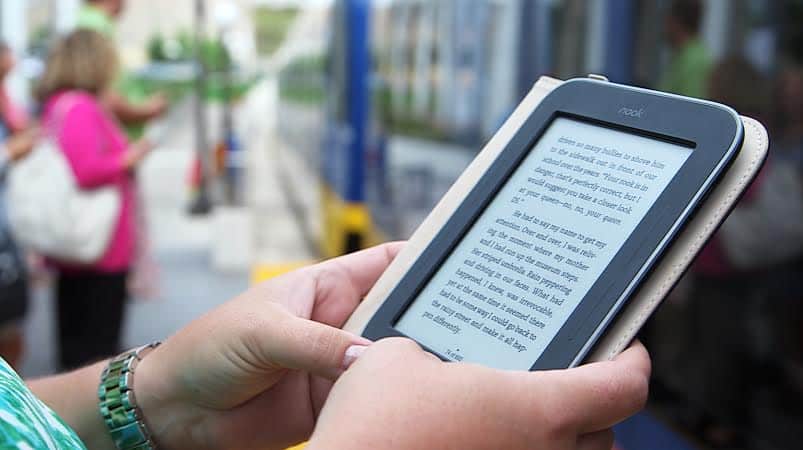
The physical shape of the nook is slightly bowed in cross-section, with the left and right edges being thicker and then tapering in to the center that adds up to a device that's arguably easier to hold than the narrower but flat Kindle. On the base of the nook there's a microUSB port – used for charging and for side-loading content – together with a 3.5mm headphone socket and (mono, despite the two grills) speaker, and you also get a microSD card slot for expanding the 2GB of onboard memory (which B&N say is good for up to 1,500 ebooks).
Nook reader app displays no text free#
While both devices have integrated 3G wireless, courtesy of AT&T's network in the US, the nook throws WiFi b/g into the mixture and, when you're in a B&N store, you'll have free wireless access while it might seem contrary to be still trying to lure ebook reader owners into a bricks & mortar location, B&N have a few tricks up their sleeve to sweeten the deal (more on that later). What helps the nook stand out is that, where the Kindle has its hardware QWERTY keyboard, Barnes & Noble have employed a 3.5-inch color capacitive touchscreen. At 7.7 x 4.9 x 0.5 inches it's shorter, narrower but slightly thicker than the Amazon Kindle (at 8.0 x 5.3 x 0.36 inches), and both use a 6-inch E Ink Vizplex display capable of 16 levels of grayscale. Leaving aside the question of its design origins, the nook is distinctive among the rank and file of ebook readers. Unboxing Barnes & Noble nook ereader powered-by Android:

Nook reader app displays no text full#
The mere promise has been enough for holiday demand to exceed supply, but does the nook experience live up to hype? Check out the full SlashGear review after the cut.

The Barnes & Noble nook packs not only the backing of a serious retailer but some interesting design and usability features like ebook loaning, dual displays and touchscreen navigation.

Kindle beware: there's a new wireless-toting ebook reader on the scene.


 0 kommentar(er)
0 kommentar(er)
